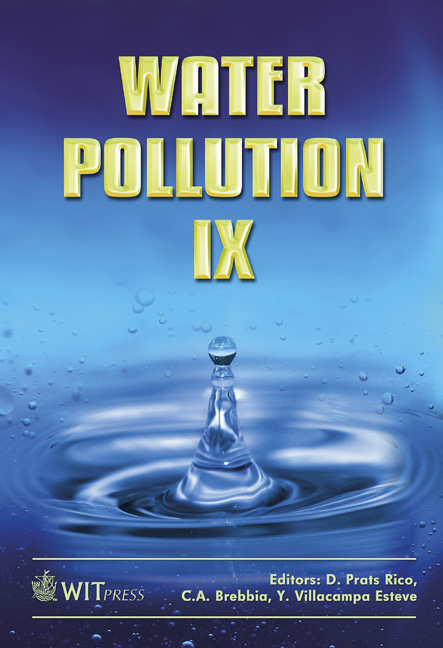Disinfection Efficiency Of Secondary Effluents With Ultraviolet Light In A Mediterranean Area
Price
Free (open access)
Transaction
Volume
111
Pages
10
Page Range
511 - 520
Published
2008
Size
328 kb
Paper DOI
10.2495/WP080501
Copyright
WIT Press
Author(s)
J. Bayo, J. M. Angosto & P. Ayala
Abstract
This paper deals with the study of physicochemical and microbiological parameters affecting the disinfection efficiency of secondary effluents in a municipal wastewater treatment plant, for irrigation purposes. There appears to be an important increase in turbidity values as chlorine values increase, due to the conversion of particulate organic carbon into dissolved organic carbon. The nitrification-denitrification processes appear to be sensitive to changes in pH, with a minimum nitrate value in the wastewater when pH ranged between 7.01 and 8.00. With a similar behaviour, the phosphate removal was conditioned by pH, showing the highest efficiency in the same pH range. Both anions proved to be strongly correlated. Total coliforms were more UV light resistant than faecal coliforms, after an exposure of 10 min, corresponding to an UV dose of 73 mJ/cm2. The experimental results for both groups of microorganisms followed first order reaction kinetics, with a gradual flattening at higher UV doses. A total elimination of both indicators would be achieved with doses over 95 mJ/cm2. A previous step on the treated wastewater would improve its quality before the disinfection process. Keywords: wastewater; ultraviolet; reuse; disinfection. 1 Introduction The use of treated wastewater is considered an important alternative water resource. Although conventional treatments processes, i.e. sedimentation, filtration and activated sludge, are known to remove up to 99% of microorganisms, it is not sufficient to achieve requirements for wastewater discharge and wastewater reuse [1]. The disinfection treatment is considered to
Keywords
wastewater; ultraviolet; reuse; disinfection.





